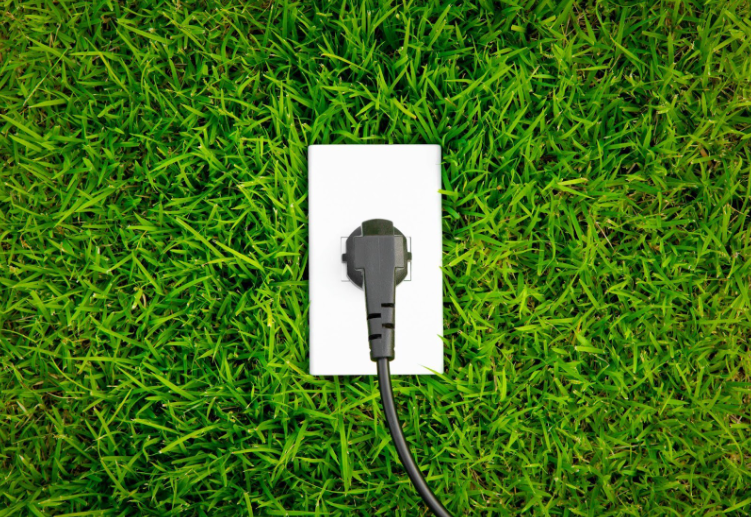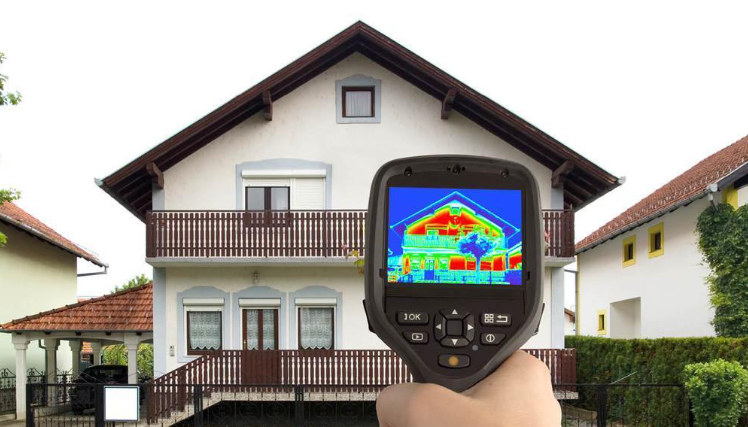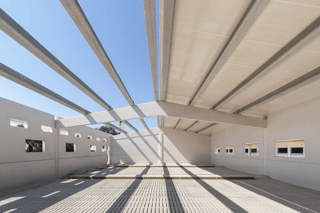The use of insulation systems and other energy-saving techniques in building envelopes is essential to improve the energy efficiency of buildings, both in new construction and in renovation. With the actions aimed at this, energy and emissions are saved, something vital for achieving more sustainable cities. It should not be forgotten that buildings account for 40% of total energy demand in the EU.
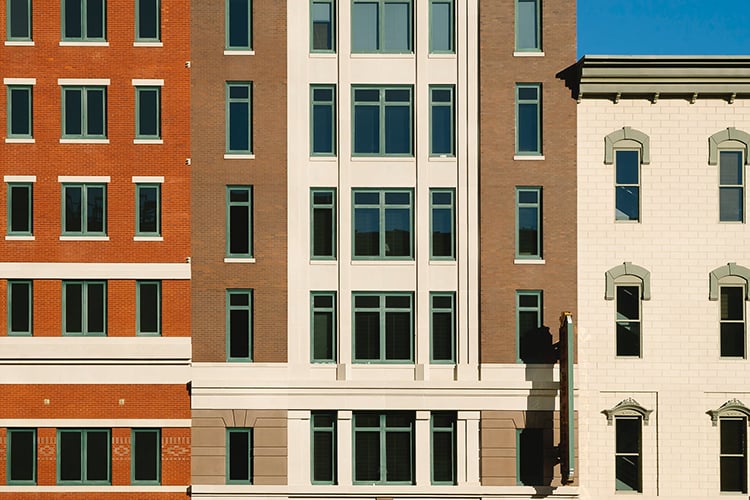
A good insulation of the façade has many advantages: it prevents air infiltration and moisture problems, neutralises thermal bridges and reinforces the structure of the envelope itself. In this way, it contributes to achieving the insulation required by national regulations.
In order to know how to choose the best insulation for facades it is necessary to evaluate the multiple options of insulation systems on the market, adjusted to the different requirements of the construction. In addition, in the case of renovations, when choosing the insulating material, it must be taken into account whether it is going to be done from the outside or from the inside and what the main objective of the work is.
Advantages and disadvantages of different types of facade insulation
The most common insulation materials range from polystyrene - whether expanded or extruded - to polyurethane, cork and mineral wools. The most effective outdoor thermal insulation will be that which has good resistance to heat and cold, as well as water vapour. Fire performance and the ability to insulate acoustically are also features to be assessed. Of all the options, polyurethane systems offer the best insulating capacity, as well as being flexible, versatile and profitable.
Ventilated facade insulation system
A metal structure is anchored on the inner sheet of the façade to support the insulation layer and the outer sheet of finish, leaving an air chamber of a few centimetres that will protect against adverse climatic conditions. In the exterior it can be placed from stone to sandwich panels, slate, wood, fibrocement, etc.. Polyurethane, due to its flexibility, adapts to the structure and geometry of the building, without reducing the useful space or affecting the life of the interior during installation. On the other hand, it hardly needs any maintenance. It provides both thermal and acoustic insulation, as well as protecting the structure of the building.
ETICS external insulation system
It consists of placing insulating panels directly on the outside of the façade, using adhesives and mechanical fixing. It allows finishes depending on the aesthetics of the building. ETICS is an easy to install and economical system.
The starting profiles are placed before the insulation boards, which will be fixed with adhesive to the profile. The corners are then protected with metal profiles, and a layer of base mortar is applied. After this, the reinforcing mesh is placed, on which a second layer of mortar is applied to carry out the primer and the finishing coat.
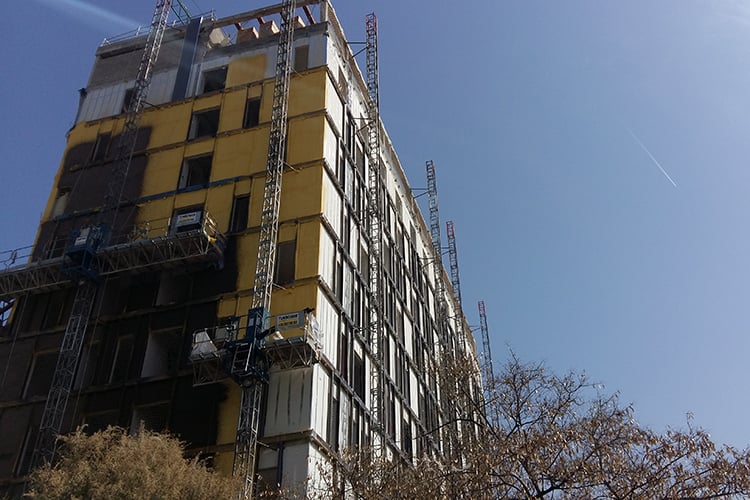
Injection of thermal insulation into the air chamber
It is the best way to achieve a complete adaptation to the singularities of each camera. The injected polyurethane foam provides rigidity without reducing useful space either inside or outside. In addition, its maintenance is minimal, and is more affordable than placing a double skin. The Phono Spray I-905 open cell system adapts perfectly to these requirements.
Any double-leaf facade can be injected with polyurethane, regardless of its material. It is a great option in cases of rehabilitation of buildings. The important thing is that it has an air chamber. It is injected with polyurethane, which expands inside forming a layer of rigid foam very insulating and low density.
Due to its versatility, ease of application and thermal and acoustic performance, polyurethane is the material that offers the best insulation for facades.


